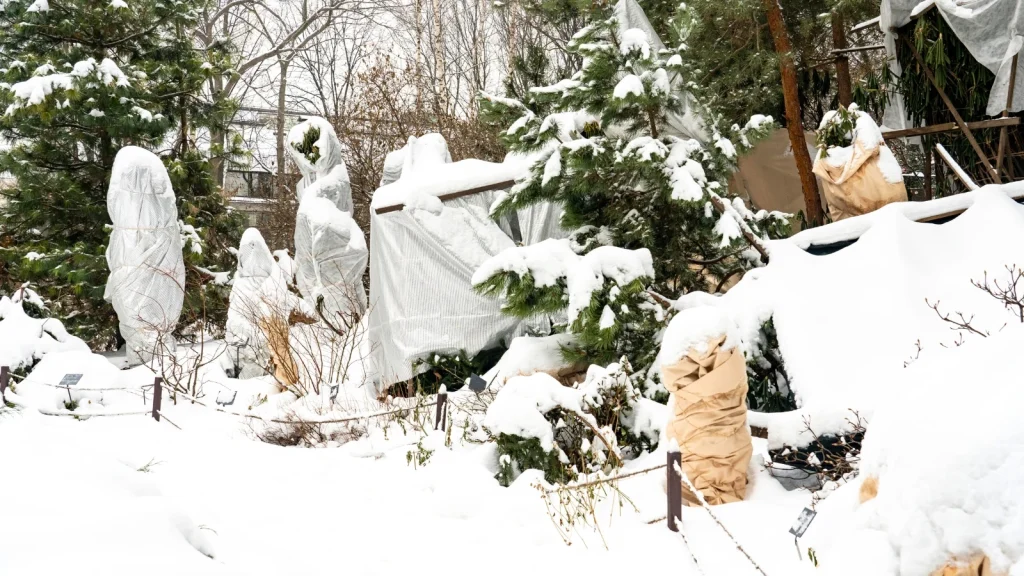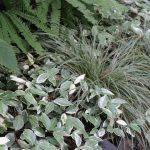Shrubs for winter — a short introduction to this piece.
Shrubs for winter: Quick Notes
Preparing your trees and shrubs for winter is one of the most important steps in maintaining their health and beauty. As the temperature drops, your plants enter dormancy and become more vulnerable to cold damage. Protecting them with wraps and covers can prevent most of the issues winter causes for these plants.
Cold temperatures, harsh winds, fluctuating sunlight, and animals can all cause damage to your trees and shrubs in winter. While mature and established specimens often stand up to winter conditions on their own, younger ones may not. Factors like age, bark thickness, and species are all important considerations when it comes to winter damage.
Wrap your shrubs and trees for winter to make a significant difference in how well they make it through. If you do it properly, it should bring your plants through the harsh weather without harm. Let’s talk about the reasons for wrapping your plants, and then go over the best ways to do it.

Why Wrap?
The short answer to why you should wrap your trees and shrubs for winter is protection. Let’s break it down into different types of damage and what causes them. This will make it easier to see why and how wrapping them helps.
Sunscald
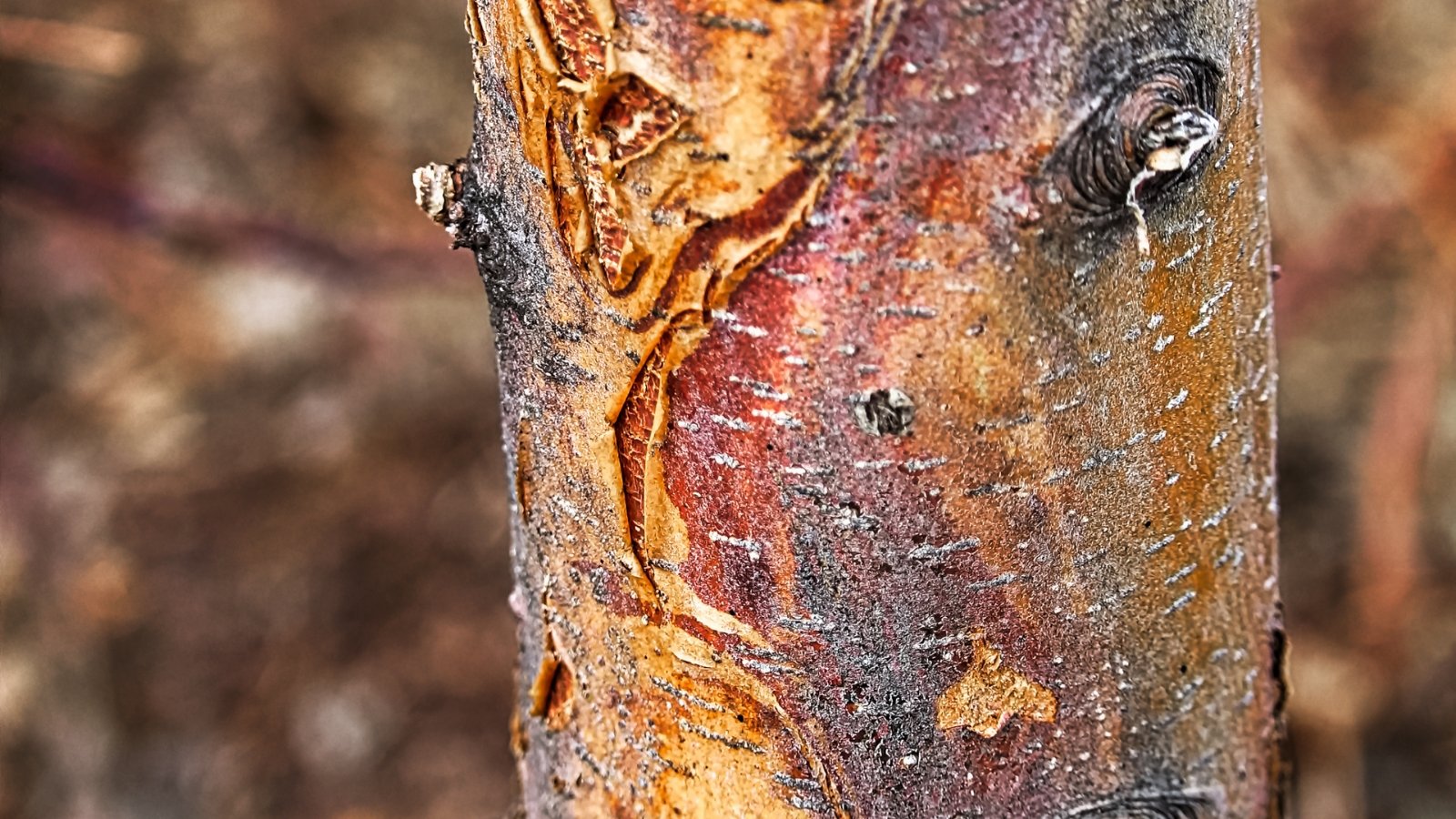

Sunscald is a common winter injury on shrubs and trees, especially young ones and those with thin bark. It’s caused by temperature swings and winter sun, which is surprisingly bright. The result is unsightly and can also be deadly.
Also called southwest injury, sunscald happens to the south or southwest side of tree trunks, typically in late winter. A combination of warm, bright sun during the day and extreme cold at night is the cause. It’s the shift from one to the other that creates this issue.
On sunny days, your tree’s bark warms up, even if the air is freezing. This causes the cambium cells under the bark to become active. When night comes and the temperature drops, with no more sun to provide heat, the tissues freeze. This kills the active cells, which causes the bark to crack or peel.
Young trees and those with smooth bark are most susceptible to sunscald. Their thinner bark makes them more sensitive to temperature swings. Some commonly affected trees include fruit trees, maples, lindens, tulip trees, and young oaks.
Desiccation
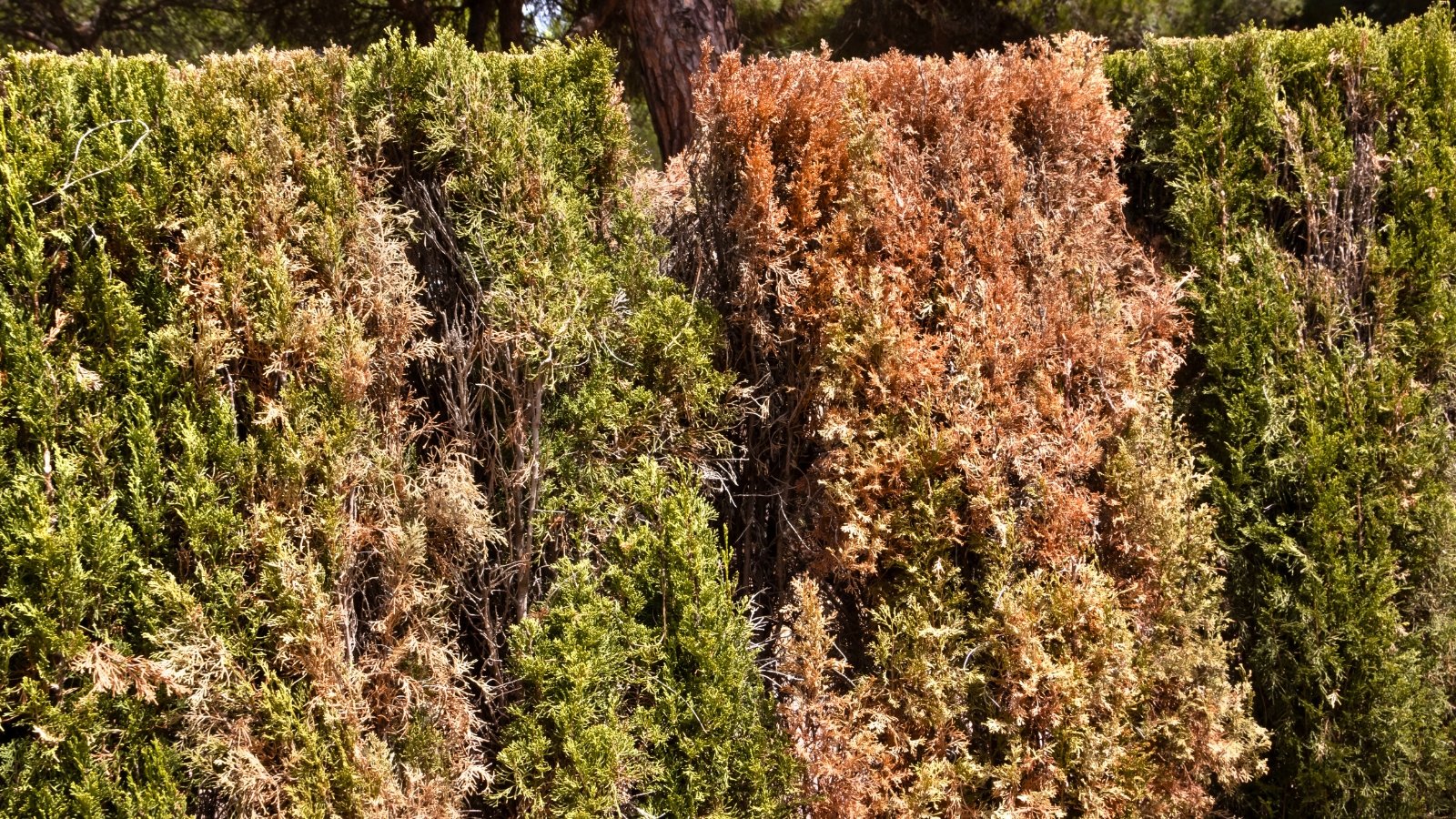

Dessication is the drying out of plant tissues during winter. It happens most on sunny and windy days as plants lose more water in this type of weather through transpiration. In summer, this isn’t a major issue, but when the ground is frozen, your shrubs and trees don’t have access to water to replace what they lost.
The result of this drying out is a loss of leaves, needles, and buds as they dry out and die. It mainly affects evergreens because they don’t enter a fully dormant state. Deciduous trees and shrubs are less vulnerable because they lose their foliage and use less water in winter.
Wrapping trees and shrubs for winter is one way to prevent this type of damage, but there are other valuable methods in addition. Always water well before the ground freezes. Moist soil holds more heat, and this will also provide a water reserve. Mulch is also a valuable defense as it insulates the roots and slows the freezing and thawing cycles.
Rodent and Deer Damage
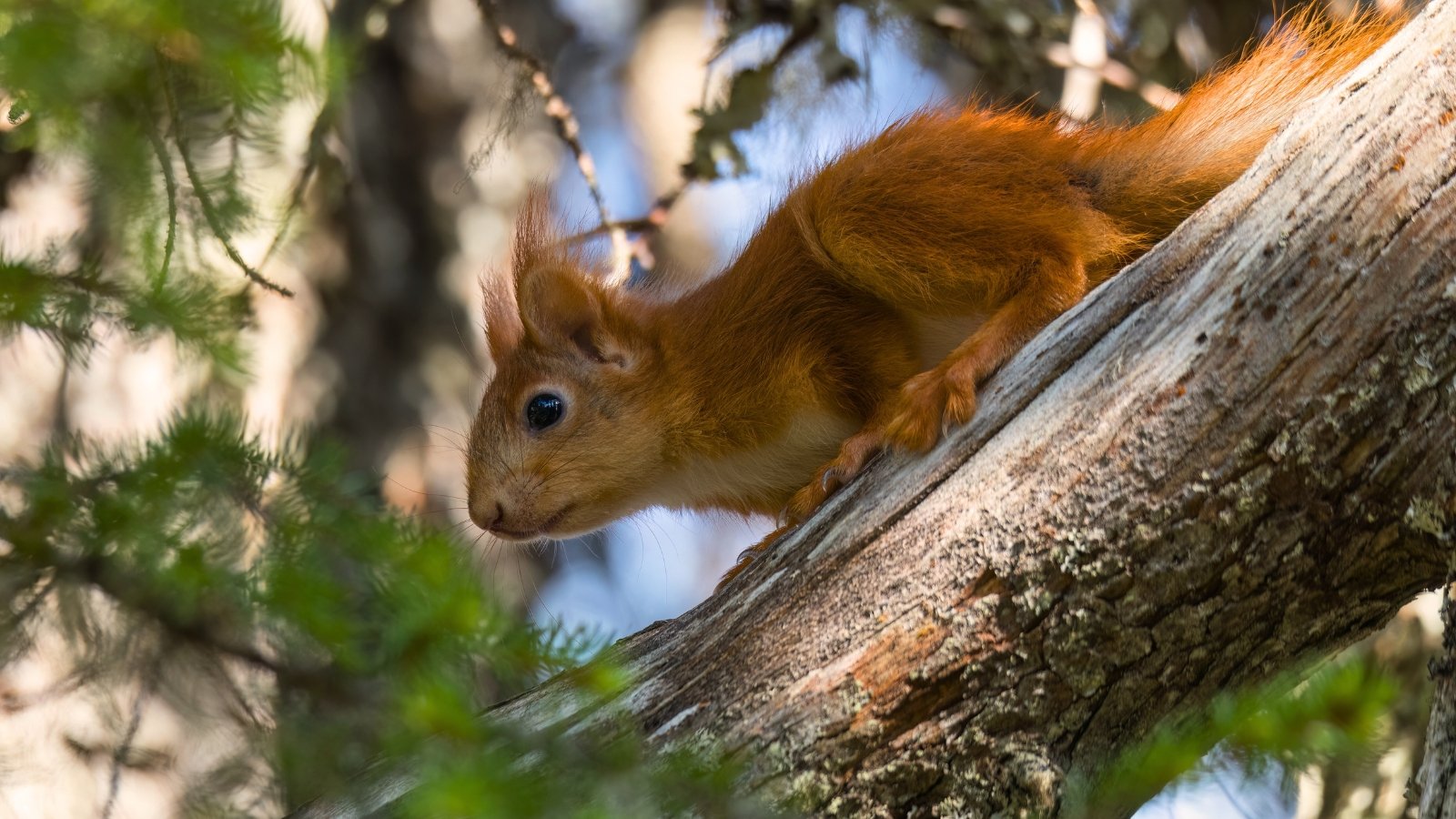

When temperatures drop, food gets scarce for much of our garden wildlife. Sometimes these animals turn to your trees and shrubs to bridge the food gap, and it can have dire consequences. The soft layer beneath the bark, called the cambium, is rich in moisture and nutrients, and rodents will chew through to get to it.
Deer can also leave damage in the form of shredded bark from antler rubbing. They may tear at the outer bark to get to that cambium layer, and nip at buds and twigs. This is yet another issue solved when you wrap trees and shrubs for winter protection.
Snow and Ice Damage
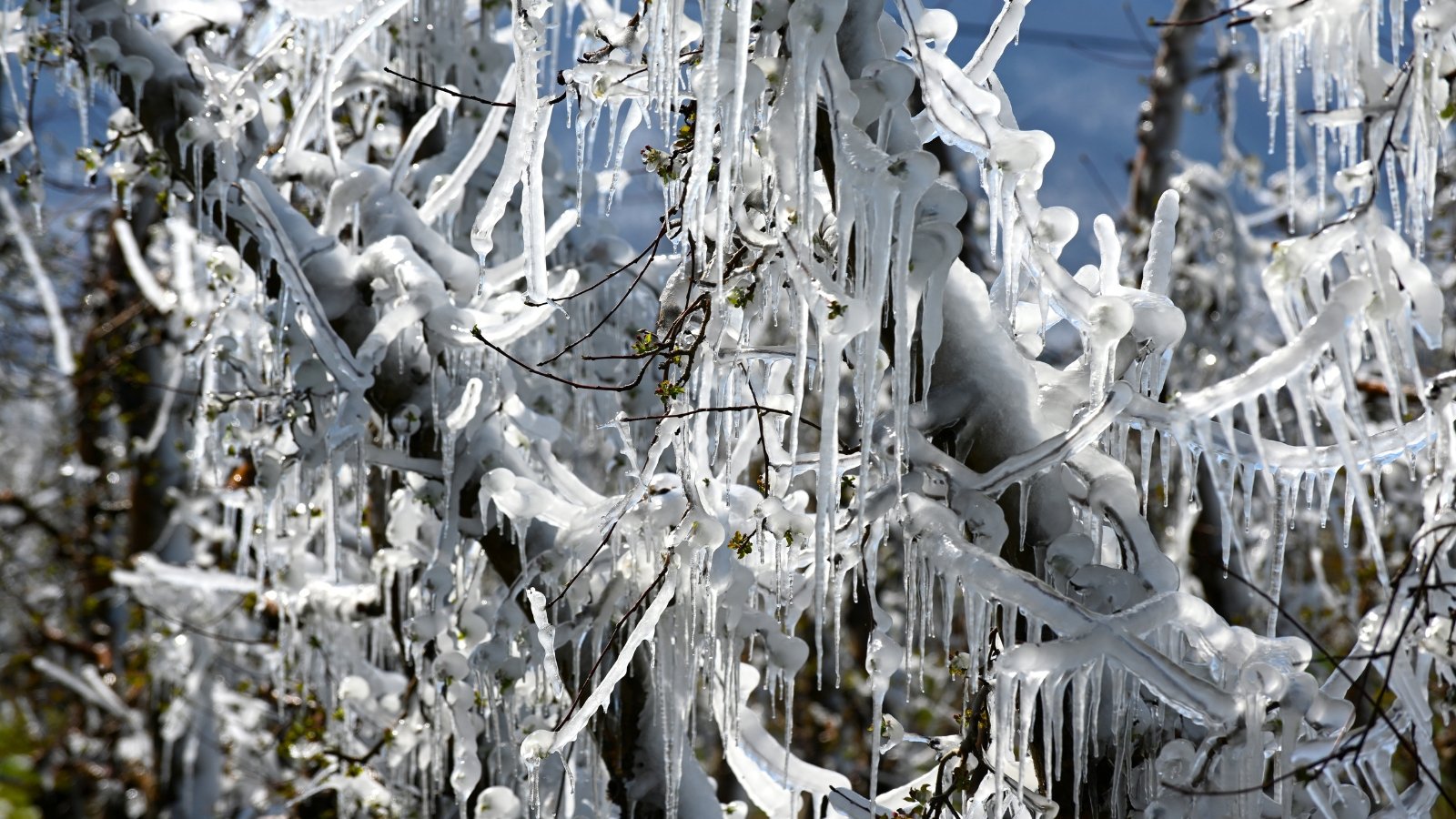

Snow and ice are also dangerous for your trees and shrubs, and another reason to wrap them. Snow and ice can collect on branches, weighing them down and causing them to snap or bend. Ice can also cause secondary bark splitting. Wrapping your plants is a worthwhile method of heading off all kinds of damage.
Choose the Right Materials
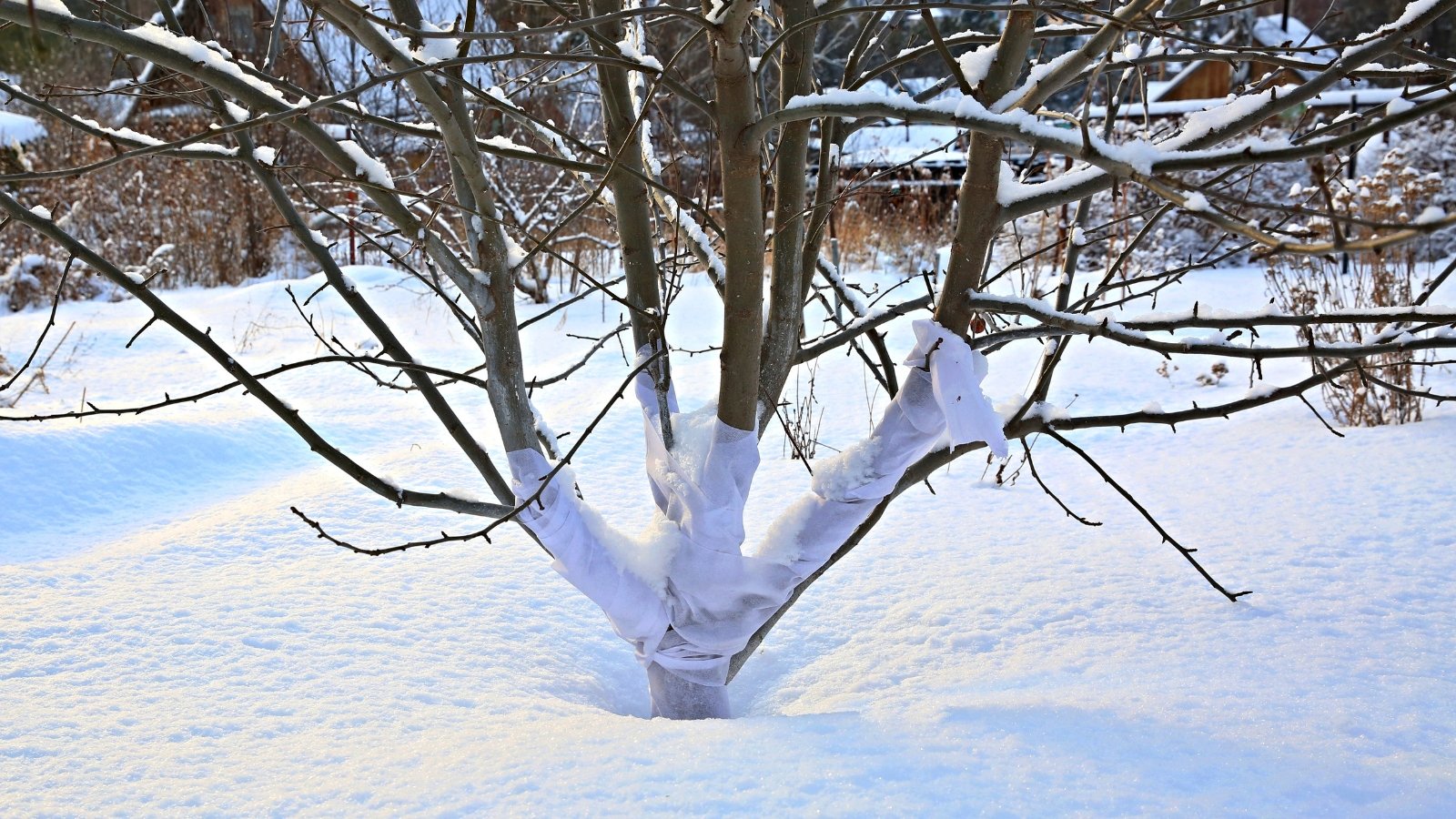

Choosing the right materials to wrap your trees and shrubs for winter is crucial to their health. The wrong ones can trap moisture, cause rot, and even overheat the bark on sunny days.
Rule number one is to use breathable materials and avoid plastic. This allows airflow around the plant to prevent mold and rot. You want your material to withstand wind and sunlight, and to provide insulation against severe temperature swings.
Paper tree wrap is a good material to use. It’s designed specifically for the purpose of wrapping young tree trunks. It protects from sunscald, cracking, and rodent gnawing. This crepe-like paper wraps in a spiral pattern, overlapping itself.
Burlap is a great choice for shrubs and evergreens that are prone to wind burn or snow damage. It’s a natural, breathable fiber, and is versatile in the garden. It allows air circulation and reduces desiccation and sunscald.
Hardware cloth or wire mesh is great for preventing animals from chewing or scratching up your bark. It works well paired with an additional covering to protect from the sun and cold.
Jute twine or rope is a good material for tying branches together to give them support. It’s also great for securing other materials like mesh and burlap. Frost cloth and landscape fabric are other good options in place of burlap or paper tree wrap.
Timing


Timing is everything when you’re wrapping your trees and shrubs for winter. If you wrap too soon, you can trap heat and moisture. If you wait too long, you may end up with some damage already done before you get around to it.
The best time to wrap is in late fall, after a hard frost, but before a deep freeze. You want to wait until your plants are dormant, but do it before consistently cold weather sets in. This usually falls in mid to late November, though north of zone 5, you may want to start earlier.
The reason for waiting this long is so that your trees and shrubs are fully dormant. It won’t trap heat, which encourages new growth. The exceptions are when wrapping for animal protection, as you can do this sooner. Also, with newly planted shrubs, wrap them before the first hard frost.
Wrapping Shrubs
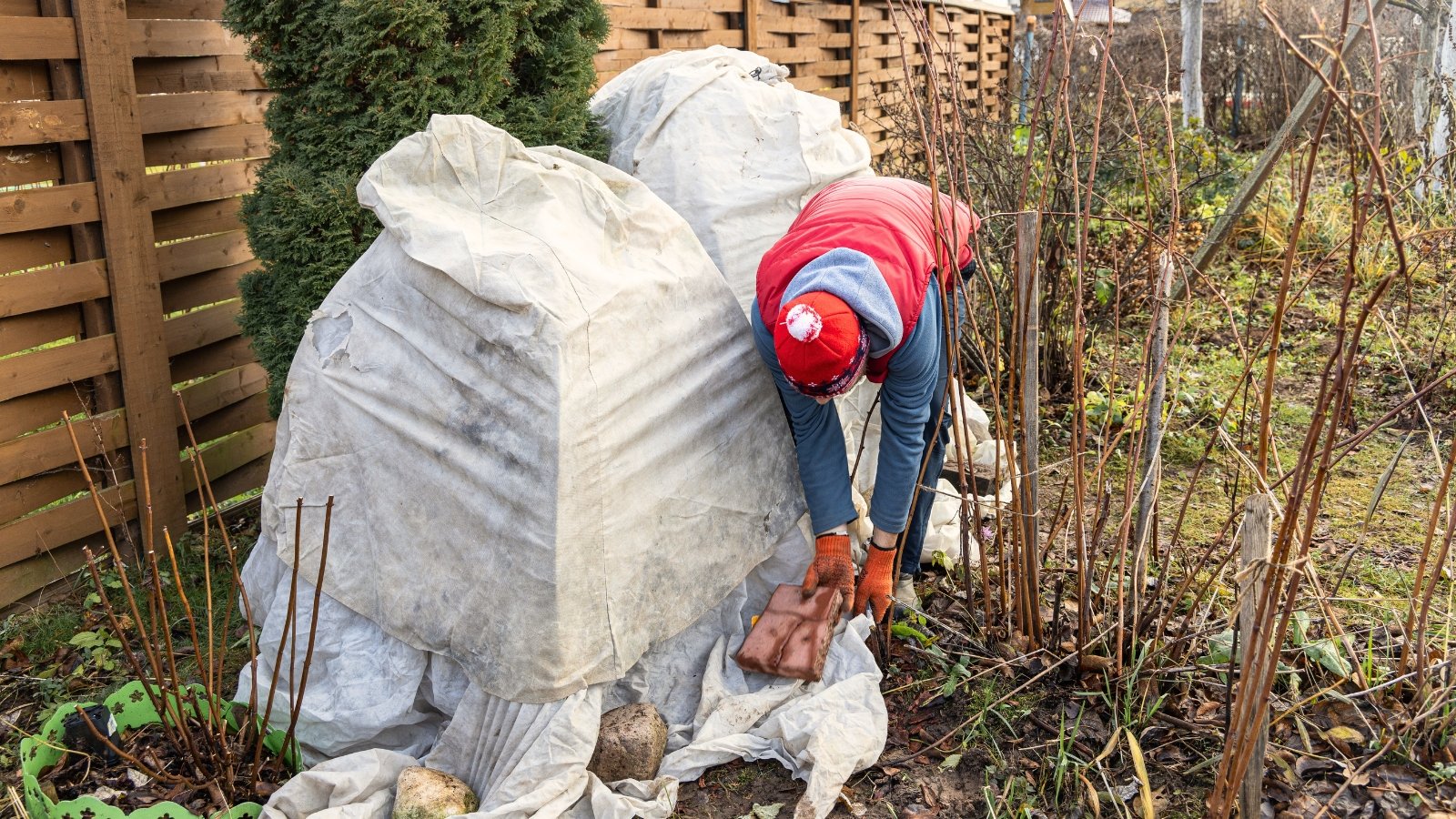

There are two different, effective methods to wrap shrubs. The first is the cone method, which is best for small to medium-sized shrubs. It gives all-over protection from wind, sun, and snow.
Bundle branches gently and tie them with jute twine. Don’t tie too tightly, or they may snap and become warped. Just tie them enough to help reduce the weight that any individual branch has to carry.
Starting at the bottom, wrap your shrub loosely with burlap or frost cloth. Wrap in a spiral pattern, overlapping each layer by a couple of inches. Make sure to get full coverage and then secure the top and bottom with twine. Leave a bit of space at the top and bottom for ventilation.
The second method is the screen or windbreak method. This is best for larger shrubs and evergreens. It protects from wind and sun, but doesn’t smother the plant. You’ll need wooden stakes for this, in addition to your burlap or frost cloth.
Drive the stakes into the ground around the shrub, leaving about six to ten inches of space between them and the branch tips. Use your cloth or burlap to form a screen or fence around the shrub. It’s most important to cover the sides that are most exposed to wind and sun. Leave the top open.
Wrapping Tree Trunks


Wrapping tree trunks is simple and straightforward. Choosing the appropriate material is the hardest part. You can use burlap strips if you prefer a natural look, or tree wrapping paper. You can also purchase white plastic tree guards to reflect light and protect from rodents. However, these don’t breathe as well.
If you have animals to deal with, I recommend doubling up. Create a tube from the hardware cloth or wire mesh that is slightly larger around than the tree is. You don’t need to go all the way to the top of the trunk with this. Just go as far as the animals you’re dealing with can reach.
Wrap the wire mesh tube around the trunk and secure it in place. Then, take your burlap strips, tree paper, or frost cloth and wrap it around the outside. Start at the bottom and wrap in a spiral with each layer overlapping the one below.
Secure your wrapping at the top and bottom with twine. As a final protection, layer some mulch around the base of the tree to insulate the roots. This will also help the soil to retain moisture.
Shrubs for winter appears here to highlight key ideas for readers.

